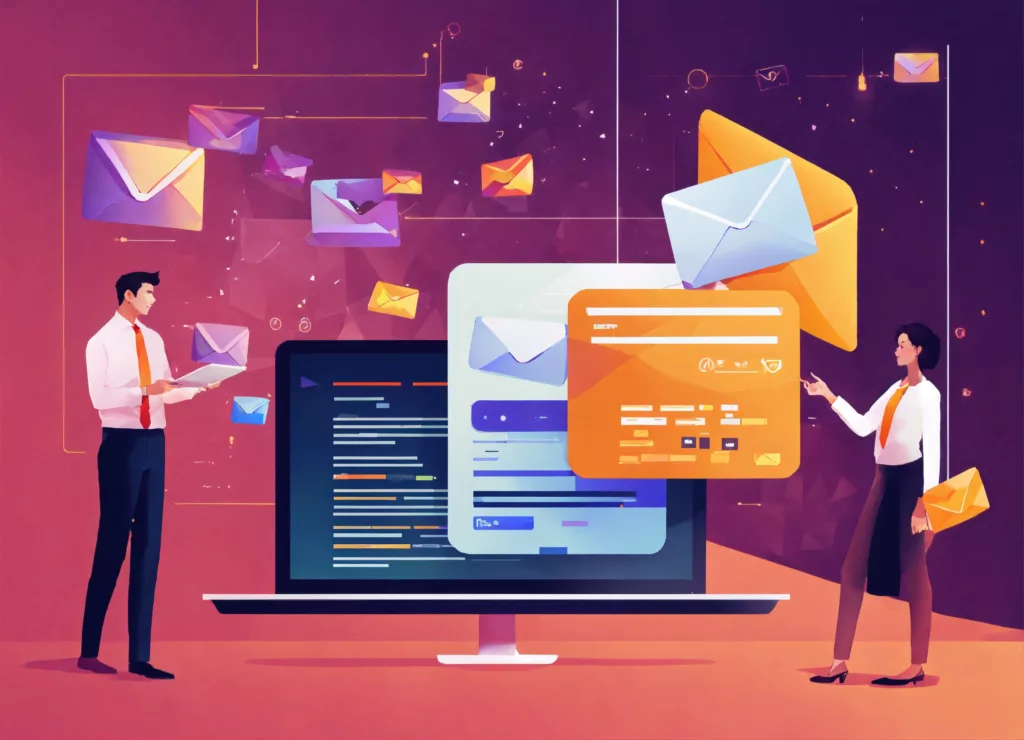Mail Deliverability, introduction
Good email deliverability is crucial to the success of any electronic communication. As a developer integrating an email API, it's essential to understand and implement best practices to ensure that emails reach your recipients' inboxes. This white paper proposes best practices for optimizing email deliverability via an API or web interface. These practices are simple, effective and quick to implement.
1 - Initial configuration
Email authentication
- DKIM (DomainKeys Identified Mail) DKIM: Configure DKIM to allow your emails to be digitally signed and verifiable by the receiving server.
- SPF (Sender Policy Framework) Implement SPF to define which servers are authorized to send emails for your domain.
- DMARC (Domain-based Message Authentication, Reporting & Conformance) DMARC: Configure DMARC to tell receiving servers how to handle emails that fail SPF and DKIM checks.
Sending domain configuration
- Use a dedicated sub-domain for transactional and marketing emails.
- Set up a CNAME record for link tracking.
2 - Contact list management
Email authentication
- DKIM (DomainKeys Identified Mail) DKIM: Configure DKIM to allow your emails to be digitally signed and verifiable by the receiving server.
- SPF (Sender Policy Framework) Implement SPF to define which servers are authorized to send emails for your domain.
- DMARC (Domain-based Message Authentication, Reporting & Conformance) DMARC: Configure DMARC to tell receiving servers how to handle emails that fail SPF and DKIM checks.
Sending domain configuration
- Use a dedicated sub-domain for transactional and marketing emails.
- Set up a CNAME record for link tracking, more info here.
3 - Mail Deliverability - Email content
4- Mailing strategies
Cadence and Frequency
- Avoid sending mass emails all at once. Use ramp-up techniques to gradually increase the volume of your mailings. On Snapshoot, you have the option of ramping up the sending of your e-mails over several hours of the day, and even over several days. This is a very effective way of ensuring good mail deliverability, minimizing the number of e-mails sent per minute and achieving better mail deliverability, especially with ISPs such as Orange, SFR, Yahoo, etc...
Timing
- Send your emails at optimal times according to your audience's geographical area and habits. Every audience is different, and every email has its own objective. Timing is of little importance for deliverability, but crucial for the success of the email campaign.
5 - Mail Deliverability, monitoring and analysis
Delivery and opening rates
- Monitor delivery, open and click rates to detect potential deliverability problems. All these metrics are available via API and on the Snapshoot.
Feedback Loop (FBL)
- Sign up for the feedback loops offered by major Internet Service Providers (ISPs) to receive reports on spam complaints.
6 - Reputation management
IP reputation
- Use dedicated IP addresses to send emails.
- Monitor the reputation of your IP addresses using reputation monitoring tools.
Estate reputation
- Maintain a good domain reputation by following deliverability best practices.
Conclusion
Email deliverability is a key element of successful electronic communication. By following these best practices, developers can ensure that their emails reach recipients efficiently and reliably. Appropriate configuration, careful management of contact lists, quality content, a well-thought-out sending strategy and continuous monitoring are essential to optimize email deliverability via a API.

